Asian Steamed Buns
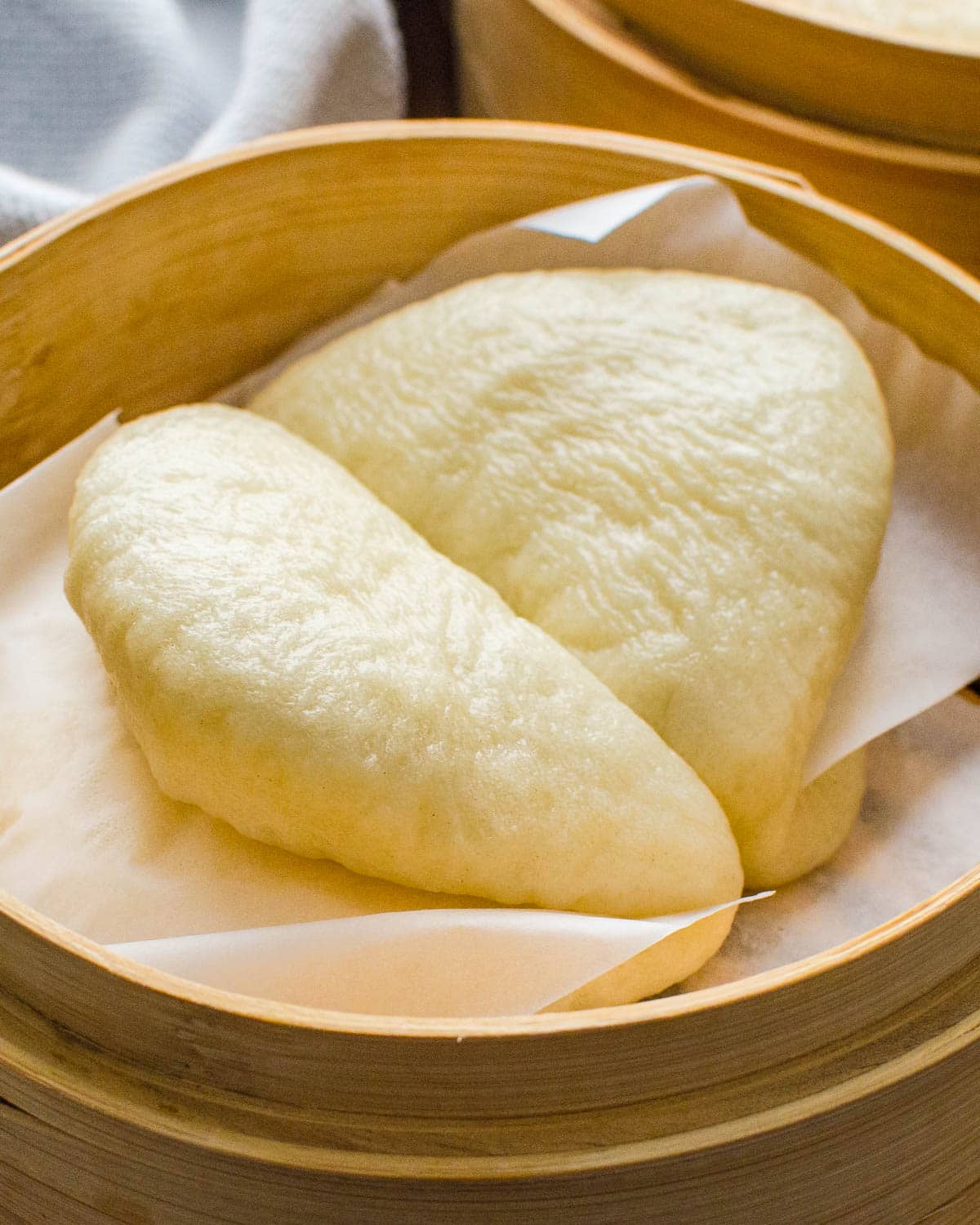
These Asian Steamed Buns will wow your friends and family. If you love bao buns as much as me, you’ll want to know how to make your own at home. Asian buns take some time, but they’re worth it.
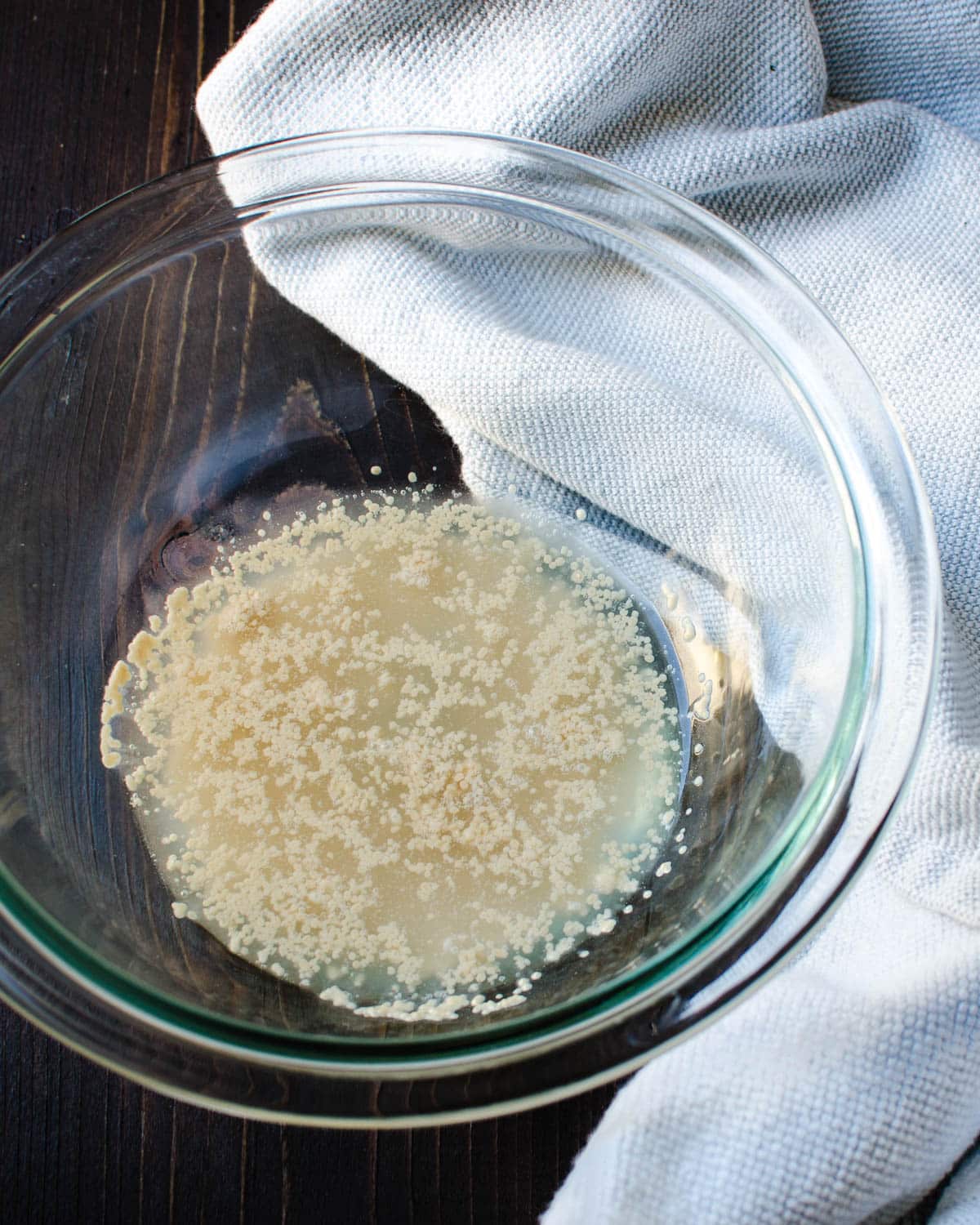
As far as weaknesses go, this is a big one for me. Asian steamed buns. They are light, slightly sweet conveyors of all types of fillings. Also known as Bao, these buns are a blank canvas for whatever you’d like to fill them with… Preferably something savory, sweet and spicy all at the same time. But I’m getting ahead of myself…
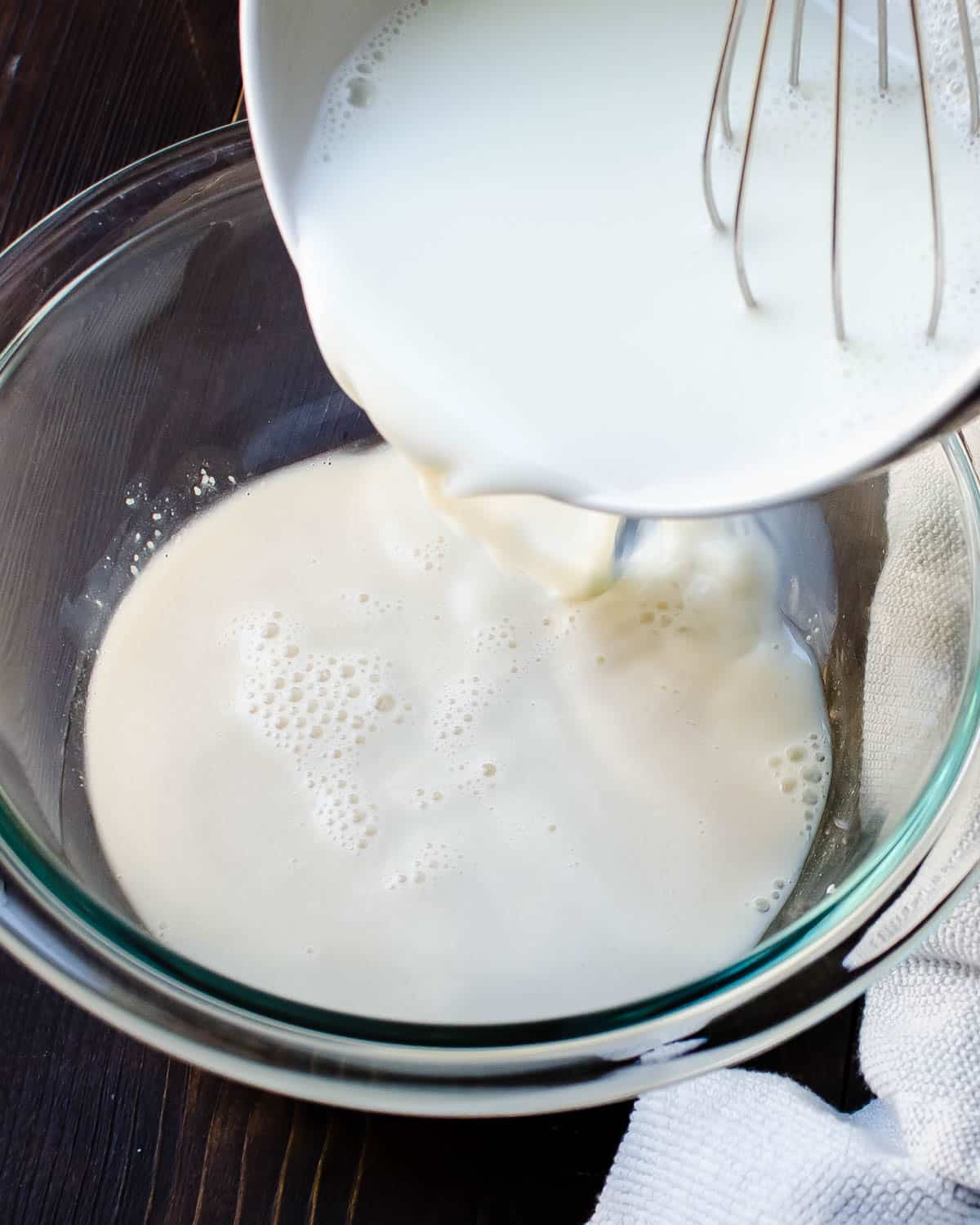
Because before we can start on the fillings, we have to make the buns and I have to say, this isn’t for the feint of heart. It’s not difficult, but it takes time and patience.
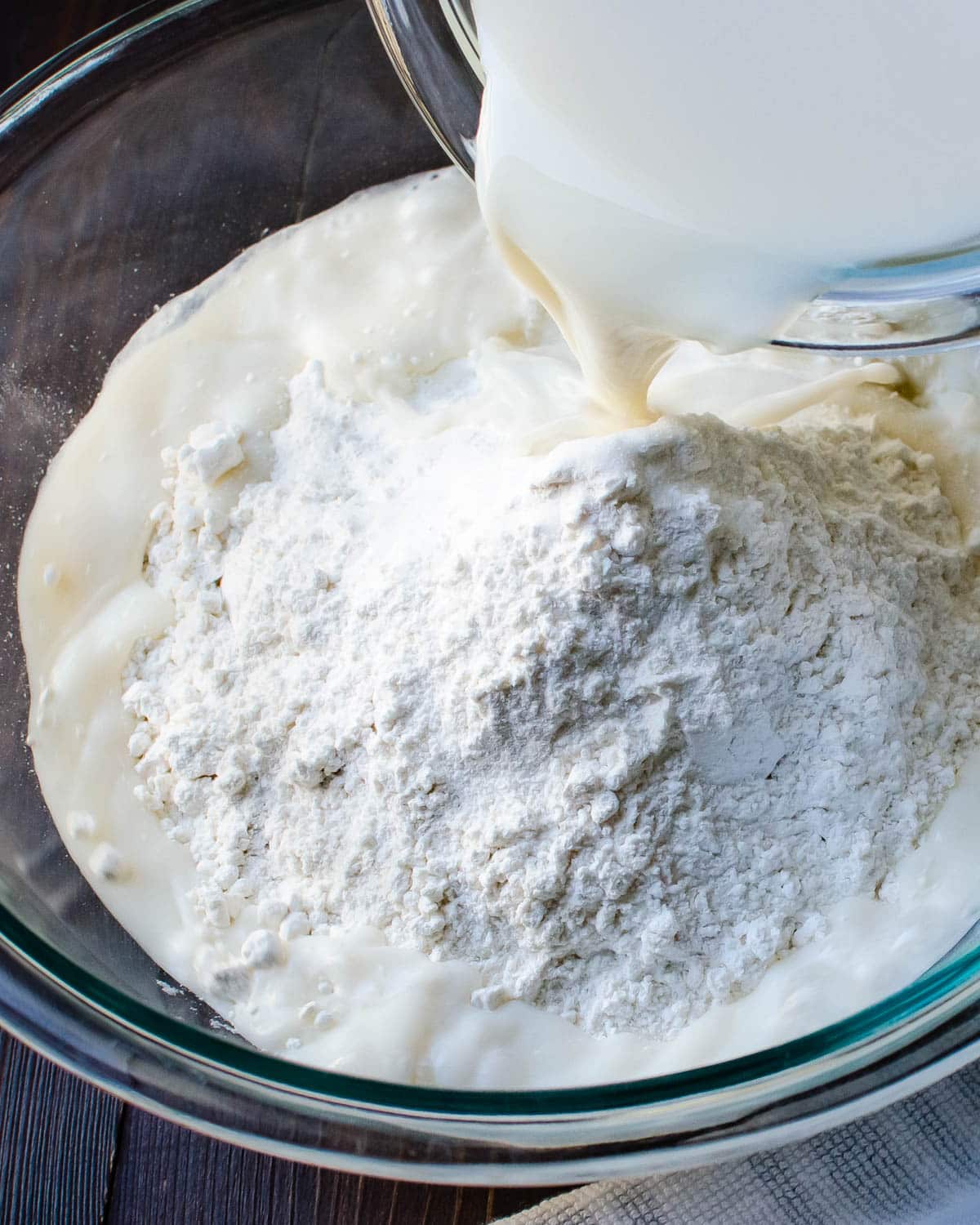
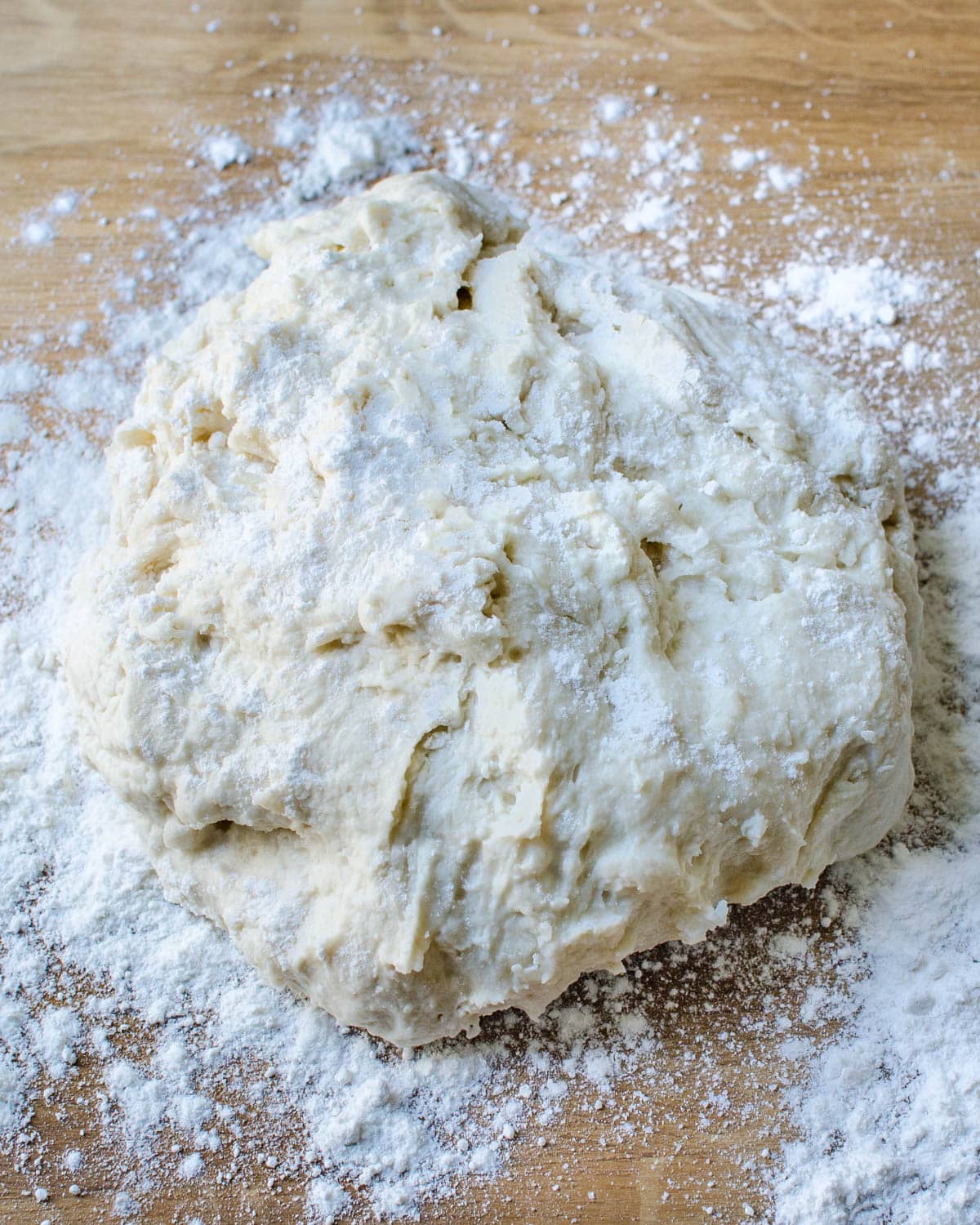
This recipe is mostly from David Chang of Momofuku. I say mostly because I’ve included a few helpful hints that I think will assist the home cook (like using parchment paper to steam the buns). As I read through his recipe, there were a couple steps that surprised me. The first surprise was NOT ADDING THE BAKING POWDER to the flour… Instead, you sprinkle it over the dough after the first rise. Weird. I wish I understood the science behind that maneuver.
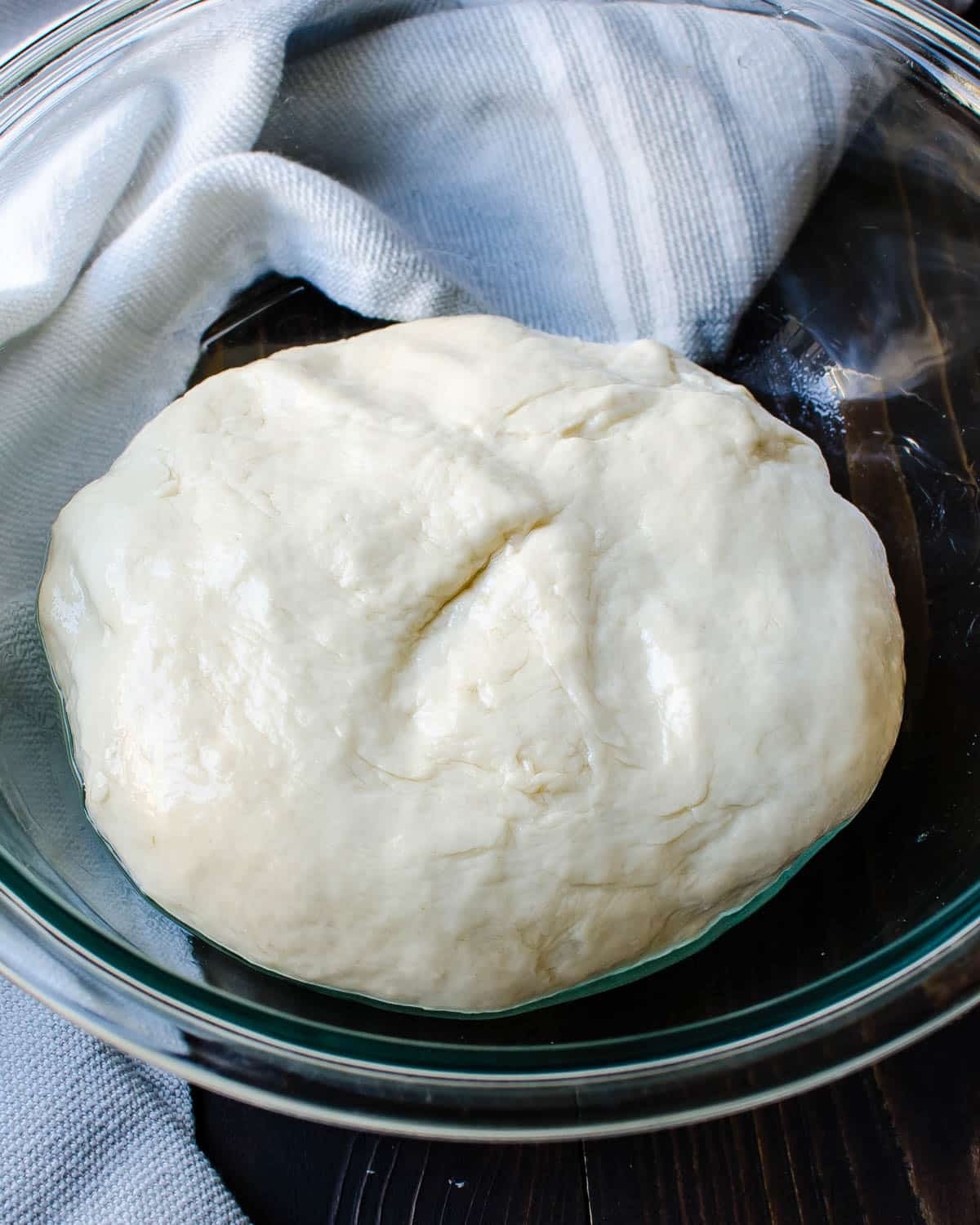
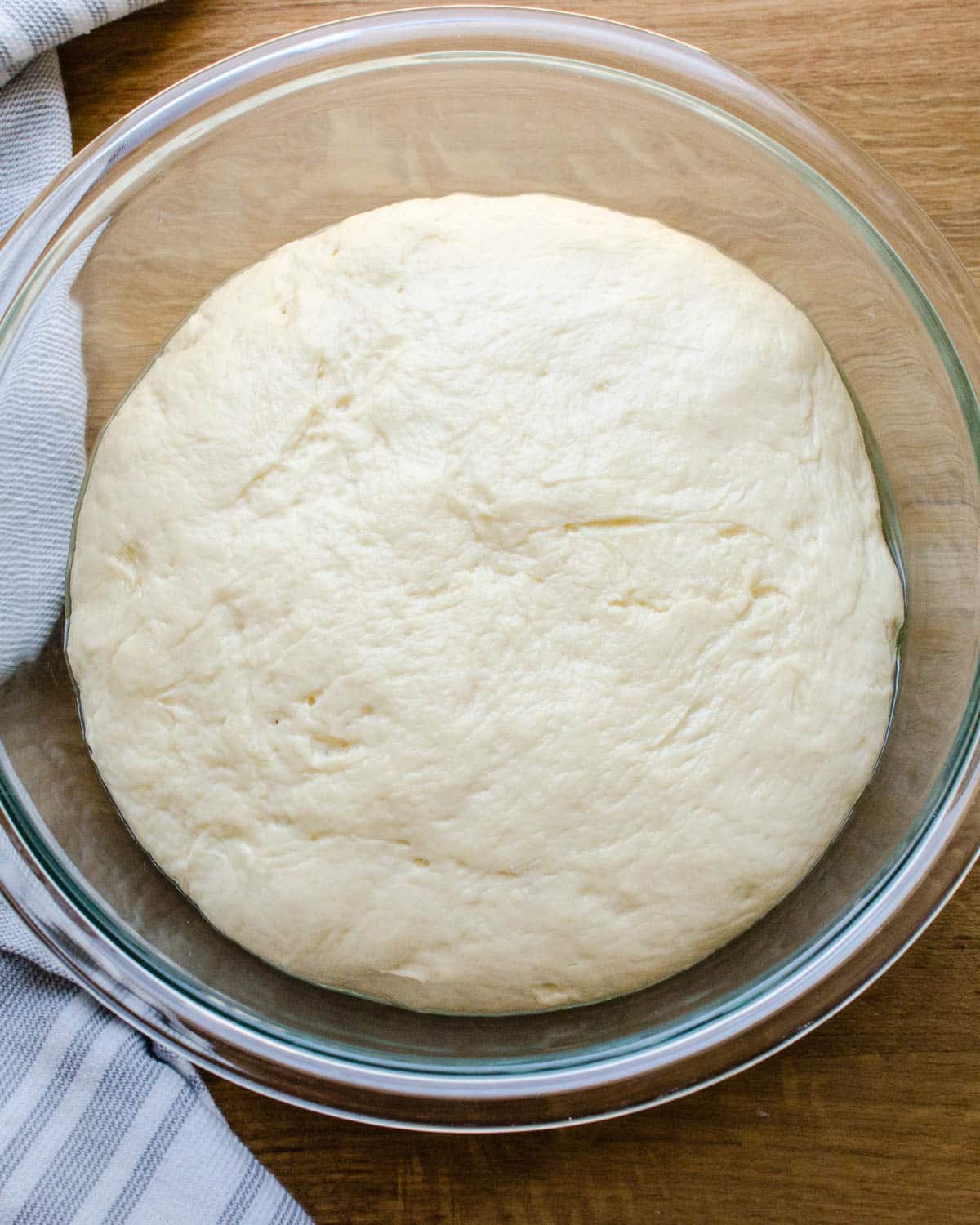
After the baking powder is sprinkled over the dough, you knead it into it. Let it rise for another 30 minutes.
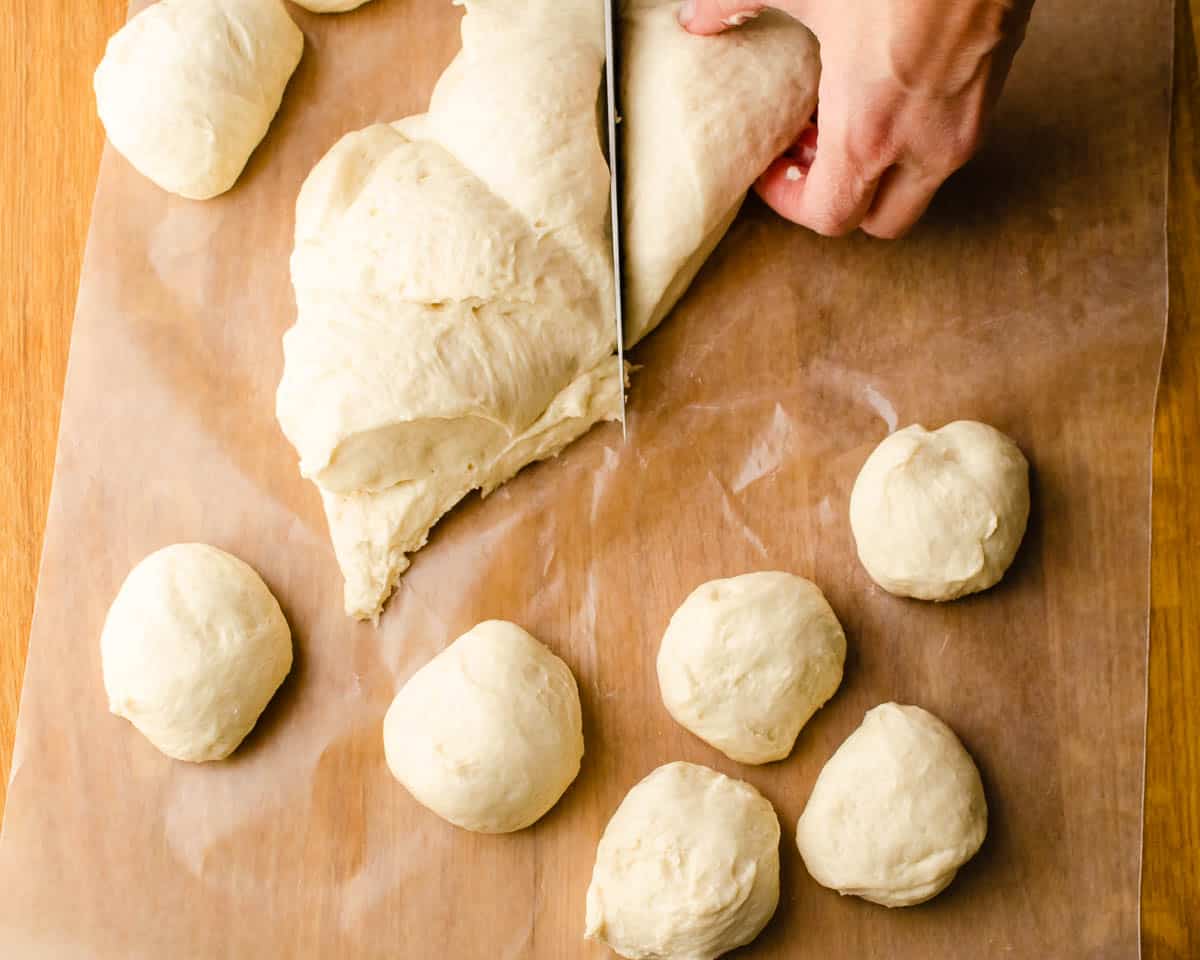
Then divvy up the dough into 16 equal portions and roll them into balls. Let them rest for another 30 minutes. Meanwhile cut 16 pieces of parchment paper roughly 3″ x 2″ to tuck into the buns to prevent them from sticking together.
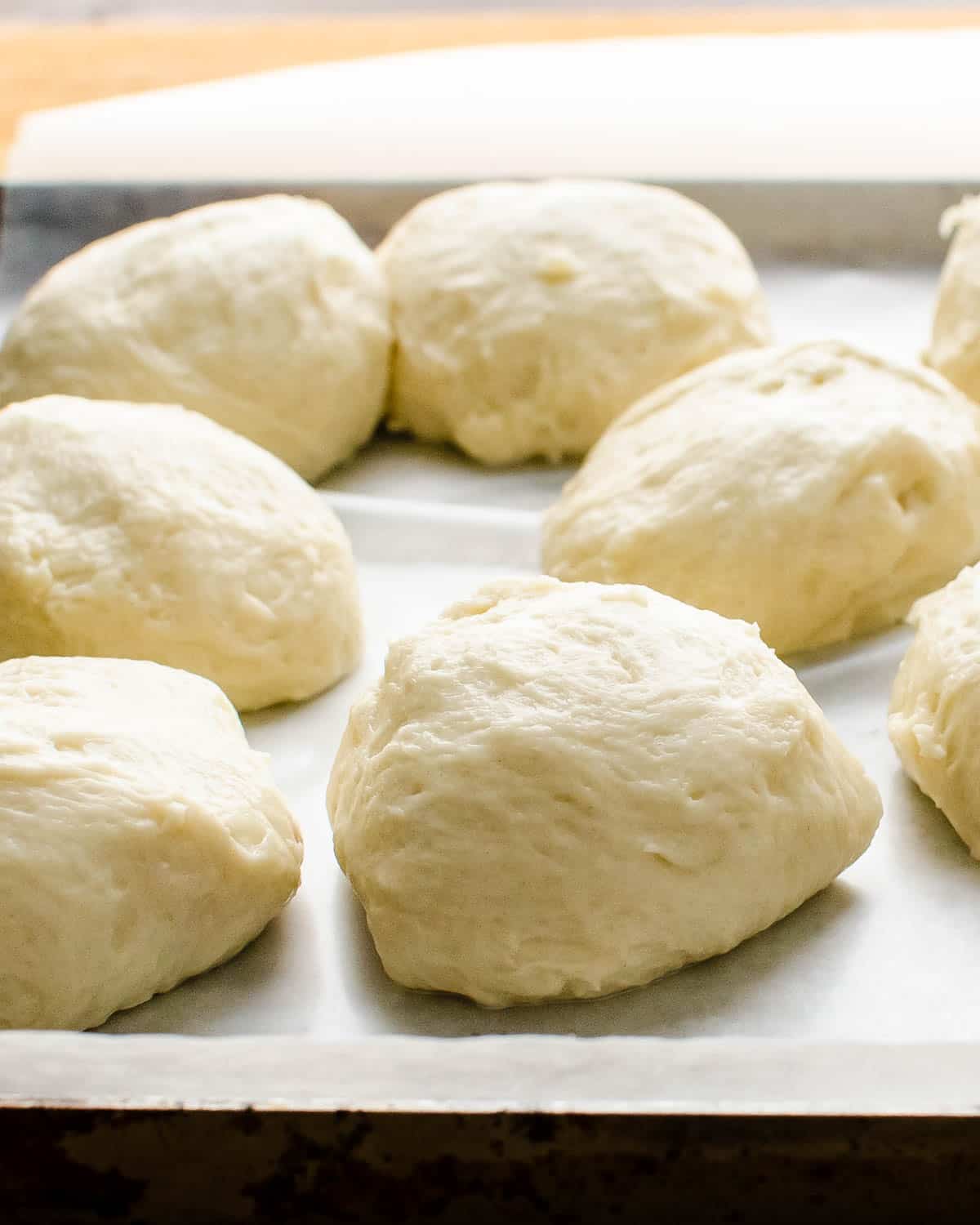
After the dough has rested, roll out the dough balls into ovals on a floured board.
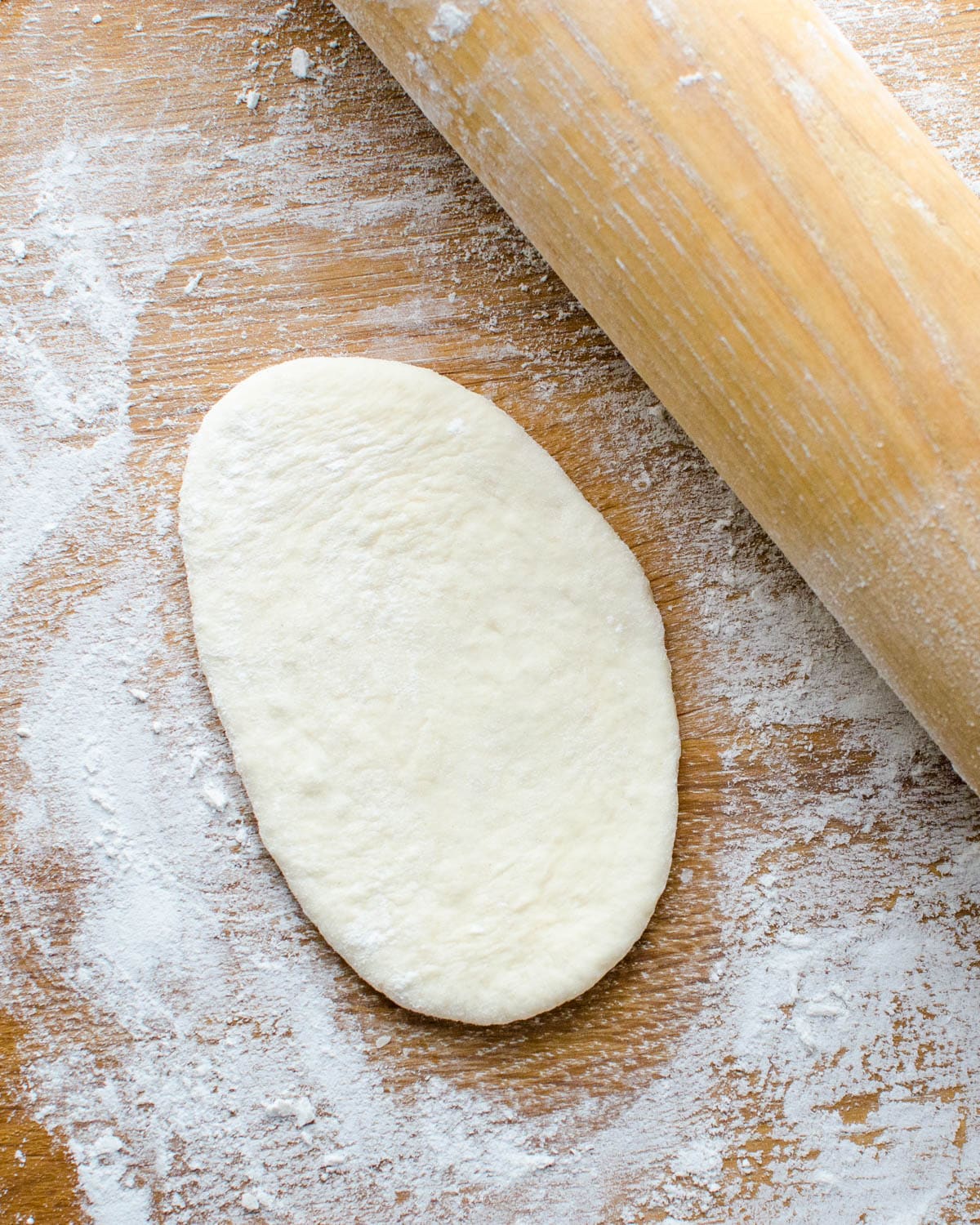
Place the parchment paper on the bun, bisecting the oval.
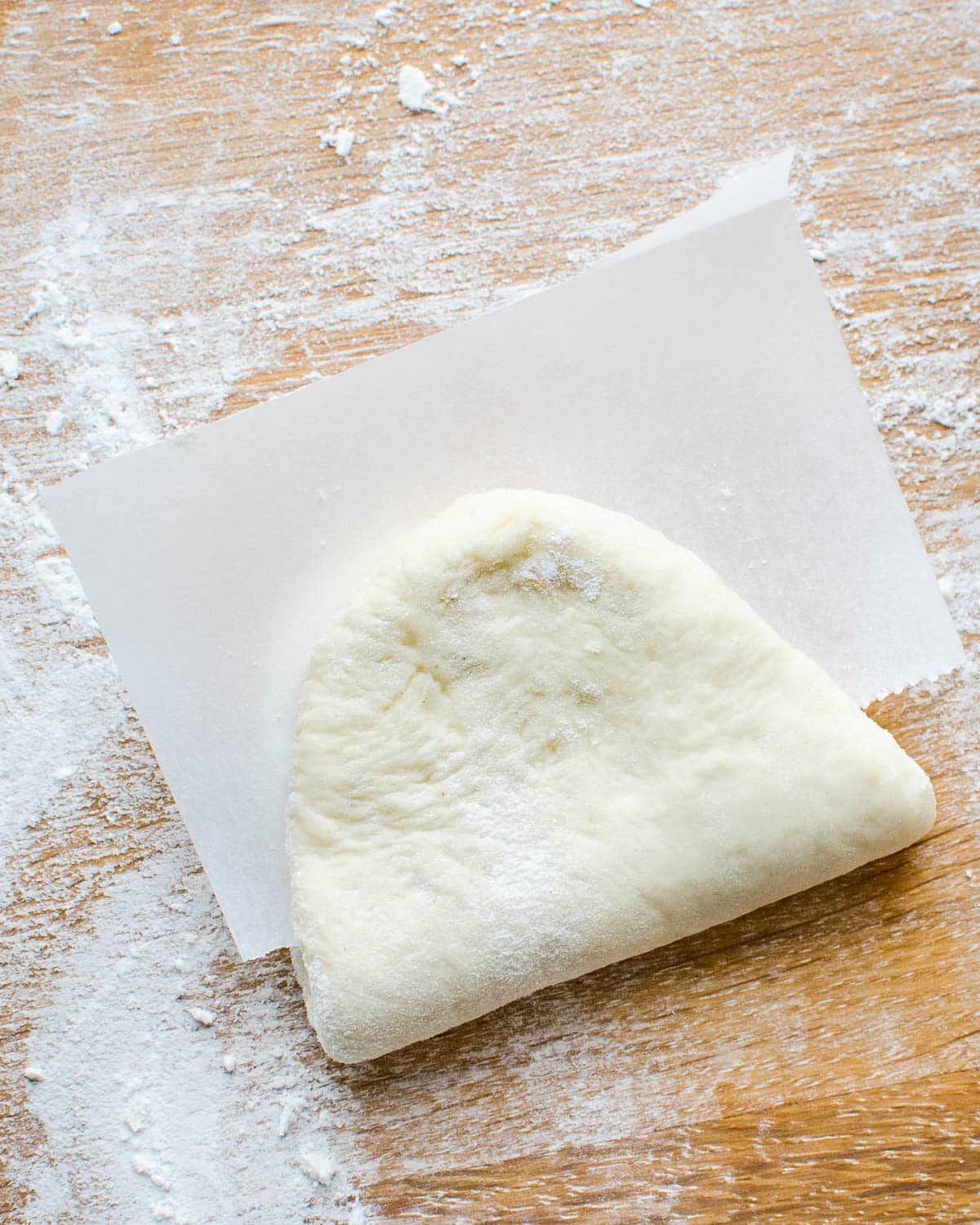
Fold it over.
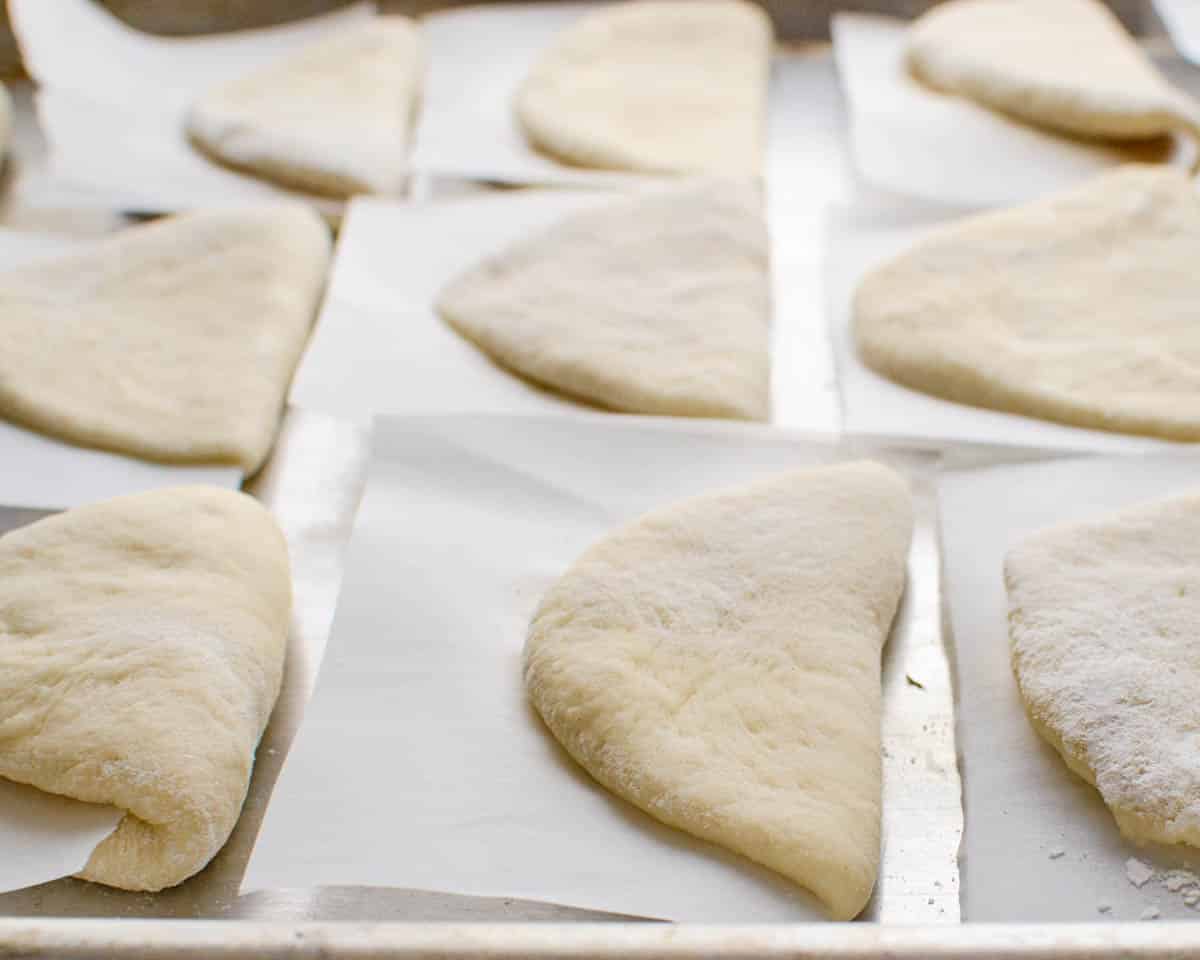
Line a bamboo steamer with more parchment paper so the buns don’t stick. Place the buns inside. Put about 1″ of water in a pot that will hold the steamer basket and heat to a boil. Reduce heat to a simmer. Fit the buns into the steamer and carefully place the steamer rack in the pot of steaming water (use oven mitts so you don’t burn yourself). Cover the pot.
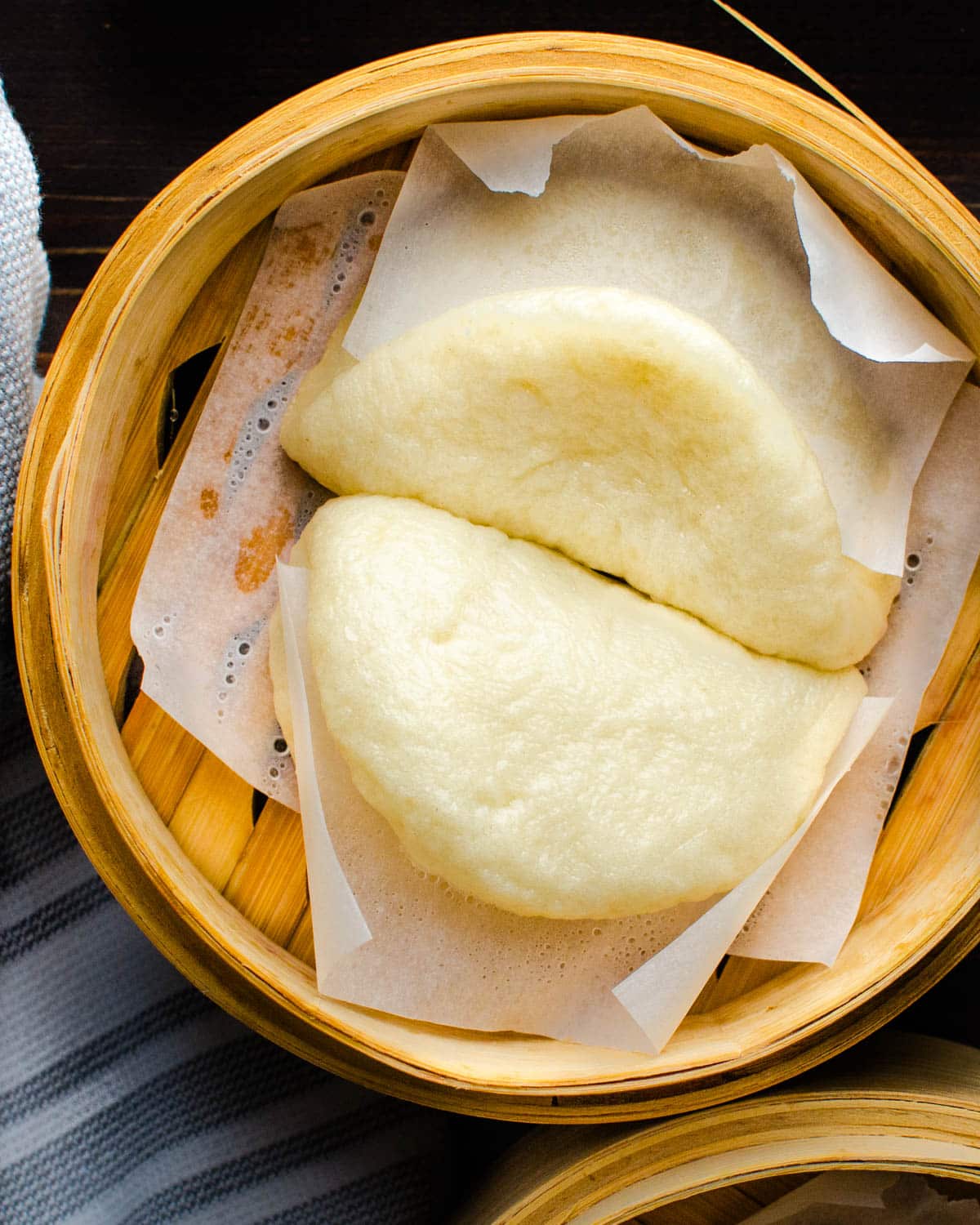
Steam the buns for about 3 minutes until they are puffed and set.
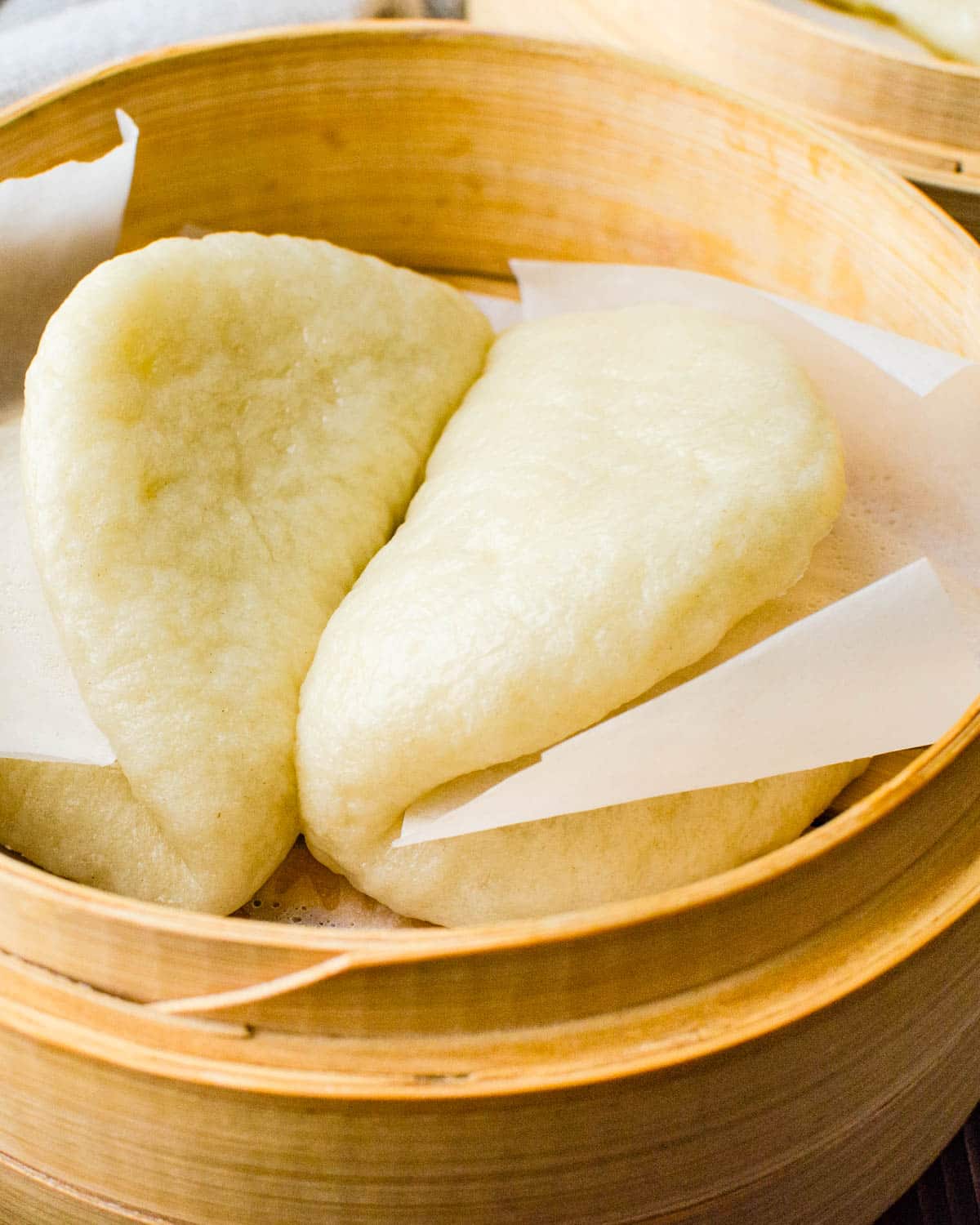
Transfer buns to a wire rack to cool… Now you’re ready to fill them… with Bulgogi Pork or Asian BBQ Pulled Pork.

Tried this recipe? Leave a rating and review.
Your comments and shares are invaluable to me and the thousands of readers who use this site daily. If you've made the recipe, leave a star rating and review. We want to hear how you liked it.
We'd love it if you shared the recipe with your friends on social media!
Asian Steamed Buns
SPECIAL EQUIPMENT:
- wok or large pot large enough to hold the bamboo steamer.
INGREDIENTS:
- 1 cup warm water 105°-115°, divided
- 1 teaspoon active dry yeast
- 3 tablespoons + 1 pinch sugar, divided
- 2 tablespoons nonfat dry milk
- 3½ cups cake flour
- 1½ teaspoons baking powder
- canola oil for brushing bowl
DIRECTIONS:
- Stir together ¼ cup warm water with yeast and pinch of sugar. Let stand until foamy, 5 to 10 minutes. (If mixture doesn’t foam, start over with new yeast.) Whisk in dried milk and remaining ¾ cup warm water.
- Stir together flour and remaining 3 tablespoons sugar in a bowl, then stir in yeast mixture (do not add baking powder yet) with a fork until a dough forms. Knead dough with your hands in bowl until all of flour is incorporated. Turn out dough onto a floured surface and knead, dusting surface and hands with just enough flour to keep dough from sticking, until dough is elastic and smooth but still soft, about 5 minutes. Form dough into a ball.
- Put dough in an oiled large bowl and turn to coat. Cover with plastic wrap and let dough rise in a draft-free place at warm room temperature until doubled, about 2 hours.
- Punch down dough, then transfer to a lightly floured surface and flatten slightly into a disk. Sprinkle baking powder over center of dough, then gather edges of dough and pinch to seal in baking powder. Knead dough with just enough flour to keep dough from sticking until baking powder is incorporated, about 5 minutes. Return dough to bowl and cover with plastic wrap, then let dough stand 30 minutes.
- Cut 16 (3- by 2-inch) pieces of parchment paper.
- Form dough into 2 equal rounds. Cut each round into 8 equal pieces. then lightly dust the dough with flour and roll them into balls. Place the dough balls on a baking sheet and cover loosely with plastic wrap. Let the dough rest for 30 minutes before continuing.
- Roll out 1 piece of dough into a 6- by 3-inch oval, lightly dusting surface, your hands, and rolling pin. Pat oval between your palms to remove excess flour, then place one of the small pieces of parchment paper over half of the bun and fold the other half over the parchment. Place bun on a piece of parchment paper on a large baking sheet and cover loosely with plastic wrap. Make more buns with remaining dough, then let stand, loosely covered, until slightly risen, about 30 minutes.
- Line a steamer rack or bamboo steamer (that will fit inside your pot or wok) with parchment paper to prevent sticking.
- Set a large steamer rack (bamboo steamer) inside a pot (or wok) and add enough water to reach within ½ inch of bottom of rack, then bring to a boil. Reduce heat to a steady simmer. Place buns in steamer rack (do not let buns touch). Cover tightly and steam until buns are puffed and cooked through, about 3 minutes. Transfer buns to a plate with tongs, then discard wax paper and wrap buns loosely in kitchen towels to keep warm. Steam remaining buns in batches, adding boiling-hot water to skillet as needed.
- Notes: Buns can be steamed and cooled completely, then chilled, wrapped tightly in a double layer of plastic wrap, up to 1 day or frozen up to 1 week. (Thaw wrapped frozen buns in refrigerator.) Reheat buns, wrapped in a dampened kitchen towel and wrapped tightly in foil, in a 350°F oven until soft and heated through, about 15 minutes.
RECIPE VIDEO:
NOTES:
NUTRITION:
Pin “Asian Steamed Buns” For Later!


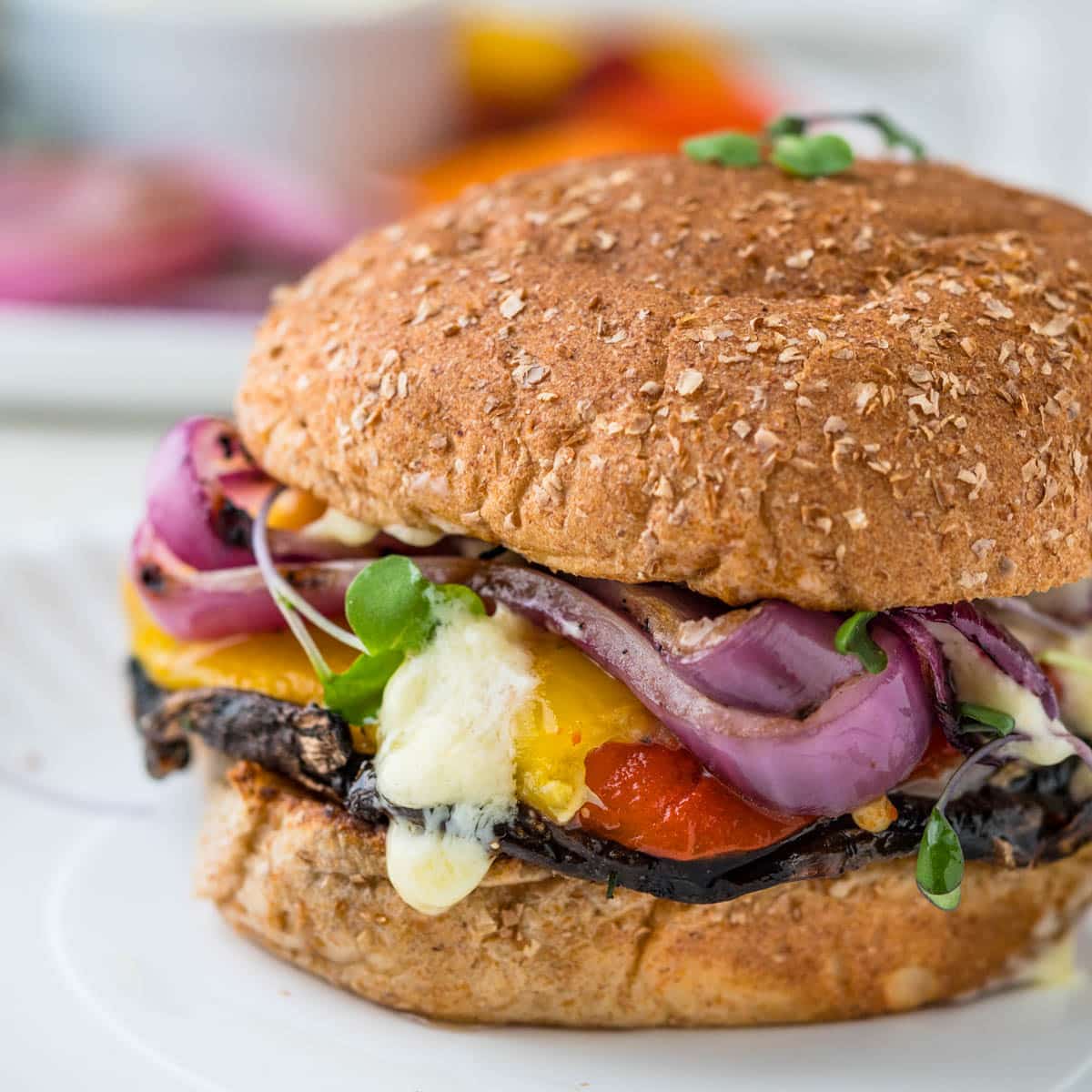
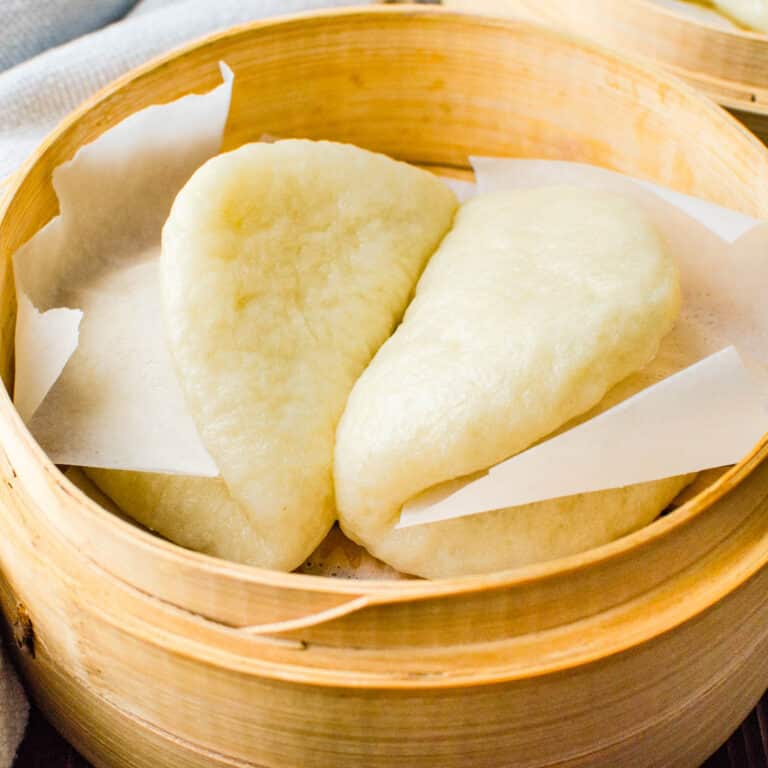
Buns came out great. Just finished steaming and will be moving on to do the final rewarm of the pork belly. 🙂 Thanks for the recipe!
I want to ask if the listed calories are 306 calories for 6 servings or 306 calories per serving?
per serving.
How can I steam my buns if I don’t have a steamer
If you have a vegetable steamer basket, you could use that. Be sure to line it with parchment paper to avoid sticking to the bottom.
Can you use something else instead of bamboo steamer?
Hi Milos, you can use a steamer basket, but you’d want to line it with cabbage leaves or something of that nature so they don’t stick.
I had to use bread flour instead of cake flour and I found I had to add almost 1/2 cup more water little by little. The dough ball is tough, not soft. Hope it works anyway.
Lot of 5 star ratings, so I have to assume no typos in the recipe. Is it just because I am not a baker and didn’t automatically know to add more water to start?
Cake flour is more tender than bread flour, so there may be some difference in texture and chew with the bread flour. As far as the water goes, I reread the recipe and it used 1 cup total of water. (1/4 cup mixed with yeast & 3/4 cup added with the nonfat dry milk later) Are you saying that you had to add 1 1/2 cups?
What size bamboo steamer do you recommend, 8″ or 10″?
I would go with the largest you can find to be able to steam more buns at once and make sure you have a pot (or wok) that will accommodate it. Mine is quite small — I need to invest in a larger one.
My household is Gluten Free, Im wondering if you ever tried this with cassava or rice flour.
Im longing to make a steamed dumpling or a bun without wheat flour.
Thank you for your amazingly easy and tasty recipes. Its always a go to for me, and a favorite at family gatherings.
Is there a non-dairy substitute for the powdered milk?
I’ve honestly never tried any powdered milk substitutes in this recipe, but I think you could probably use dried coconut milk or dried soy milk as a swap. Note: powdered coconut milk is not the same as coconut flour (which soaks up liquid like a sham-wow!)
Lisa thank you and I love you for all the details- I’m crazy about Bao and instead of buying them I’m going to start making them
Thanks, Gail! These buns take a while to make, but they’re not difficult. Enjoy!
My buns r not rising enough. Plz tell me where m I going wrong.
The buns don’t rise a lot — so I doubt you’re doing anything wrong unless your yeast was out of date. If you look at the photos, my buns don’t rise enough to fill the bowl. When you steam them, they’ll puff.
Hey, I am doing this bun for the first time ( not a real baker). However, the water (one cup)??? is that for real!!!! 31/2 cups of flour against 1 cup of liquid????
For real. I’ve checked several different recipes — many call for 4 1/2 cups of flour : 1 1/2 cups liquid. If, however, the dough is too dry, or all of the flour isn’t being incorporated to the dough, I’d add a bit more water one tablespoon at a time, but no more than 2-3 tablespoons extra total.
You add the baking powder at a later stage because the BK starts to react immediately. as you want to get the most out of it, it makes sense to add it later in the process, otherwise, it´ll run out of steam. That´s also why many recipes for Asian buns add in a small amount of vinegar.
I really wish I’d paid more attention in Chemistry! Thanks for the tutorial!
Can’t wait to try them. Thanks for the recipe.
Enjoy, Nancy!
I LOVE steamed buns, and I’m so excited to add this to my to-try list! it does sound intensive, so I’ll make sure to have some backup food in case its a total fail, lol. Off to find myself a steaming basket…
Those chinese steamer baskets are really inexpensive — Let me know how it goes for you!
Oh, I love it! How to make it step-by-step… Clear photos of the different phases of ‘production’ 🙂 instead of millions of finished product images under different angles. Thank you Lisa!
Thank you, Rose! It takes a little longer to shoot the whole process, but sometimes I think the process shots are more fun!
These are amazing, I’ve actually never seen or eaten one, but now I’m fascinated to try my hand at them. All your bread recipes look so good, Lisa!
I can’t tell you how addicted I am to these buns. We have an Asian Gastropub near our house and every time I’m there, I have to order several types of their steamed buns. Now we can have them at home. Dangerous!
I have never tried Bao Buns… But they look so much fun to make . Sure to come back when I am planning to make them.
If you haven’t tried them it might be best not to. You’ll never want to stop eating them.
I just can’t stop staring at this buns. These looks soo amazing. I never tried steamed buns before, but I bet it tastes just incredible. Thanks for this recipe Lisa 🙂
The buns are just the conduit to whatever Asian fabulousness you stuff them with. I’ve got a recipe coming next week for it, but these buns were an endeavor enough to warrant their own post!
I’ve never even TRIED bao buns, much less made them, but they always look so fun when I see them! I will have to give this a try.
If you’ve never tried them, then it’s best you don’t start. They’re addictive and you’d just have to make them and eat them in an endless cycle.
This is such a great tutorial! I love steamed buns but have avoided making them so this is brilliant. Pinning 😉
I’m glad you like it, Michelle. Next time you have a rainy day with nothing else to do, this is a good project!